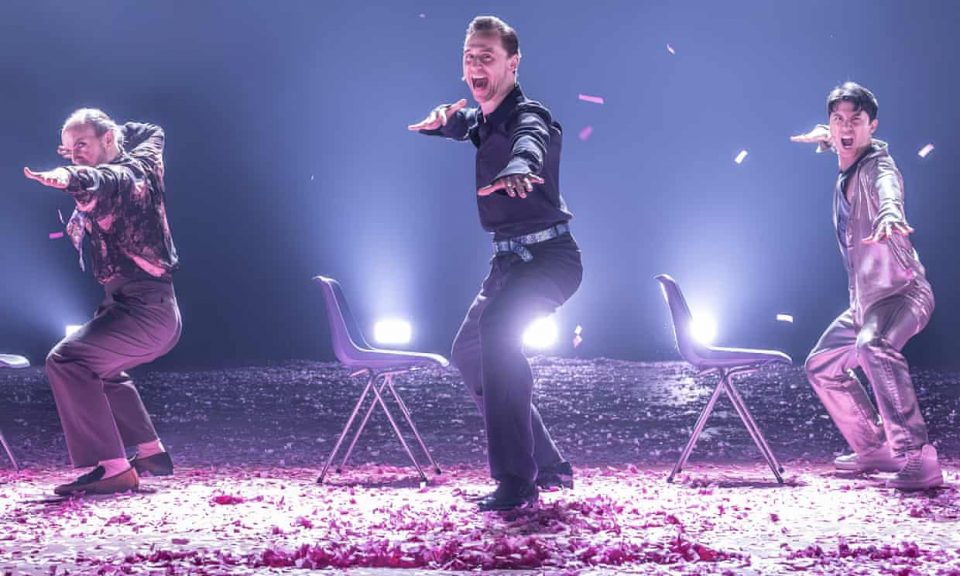Benedick dazzles in a sparkling belt along with matching glittery shoes, while Claudio sports a gold lamé cropped outfit. Although Much Ado About Nothing is over four centuries old, Jamie Lloyd’s recent production in London’s West End brings it firmly into contemporary times. A crucial element of its modern twist? The costumes, which seem to have been lifted right off a Hollywood red carpet.
Recently, menswear has been embracing a playful new fashion trend. Ordinary black tuxedos are fading into the background, making way for everything from sheer chiffon shirts to flashy jewelry. The influence of Greta Gerwig’s commercially successful Barbie film, where Ryan Gosling fully embraced his playful Ken persona both in the movie and in real life, continues to resonate in men’s fashion nearly two years after its release. From the 72-year-old Jeff Goldblum to Gen Z star Timothée Chalamet, everyone seems captivated. Even this year’s Bafta awards, typically more conservative, featured a stunning brooch as a staple of men’s attire.
Now, the “Kenification” effect has made its way to the world of theatre.
Soutra Gilmour, the costume and set designer for Much Ado About Nothing at Theatre Royal Drury Lane, reveals she began by exploring the evolution of menswear over recent years. “It has shifted away from oversized silhouettes and become more attuned to the human form,” she explains. “The choice of fabrics and textures has also advanced.”
Bridget Escolme, author of Shakespeare and Costume in Practice and a professor at Queen Mary University of London, notes that it is likely that Shakespeare’s original audiences would have witnessed actors donning the current fashions of their time.
Gilmour initiated the process by having the cast try on various clothing styles. “On stage, it’s not simply about the garments you see,” she states. “The focus is on the individual. Their physique is a tool, so they must be dressed in a way that accentuates rather than overshadows them.”
After discussions with Tom Hiddleston, who portrays Benedick, Gilmour selected a navy silk shirt paired with matching knife-pleated trousers because they resemble “a second skin”. She elaborates: “This design accentuates his physique while still allowing freedom of movement.”
The shirt features oversized lapels intended to highlight his face, but it is the glimmering belt that truly commands attention, adding a “fever dream quality” as Hiddleston moves fluidly onstage. Embracing a peacock style, he showcases his physique while declaring: “I am loved of all ladies.”
Gilmour also aimed to challenge conventional gender norms. “I didn’t want to be excessively concerned with whether garments were strictly for men or women,” she says. “This has been a long-term focus for me. It prompts ongoing discussions about masculinity, femininity, and the meanings that accompany those terms.”
The outcome? King Don Pedro (played by Gerald Kyd) flaunts a striking hot pink ensemble featuring a silk blouse unfastened to the chest. The villainous Don John (Tim Steed) plots Hero’s (Mara Huf) destruction while adorned with florals and pearls, and at one point, the clever Borachio (Mika Onyx Johnson) appears in a full-length flamingo pink faux fur coat.
Escolme expresses her excitement about the nod to today’s red carpet culture in a play that delves deeply into themes of appearance and superficial judgments.
The softer clothing choices for Hiddleston and others are purposefully contrasted with the attire of the female cast members. Beatrice (Hayley Atwell) and Hero don high heels, and Beatrice’s jumpsuit features exaggerated shoulder pads.
“I wanted the women to command attention. It’s interesting to soften the presence of the men while elevating the physical presence of the women,” Gilmour explains.
A significant aspect of Shakespeare’s lasting allure is his progressive mindset, she notes. “Even four hundred years later, his works still resonate. Costumes narrate stories, and there remains much discussion surrounding clothing in the context of gender and class politics.”


